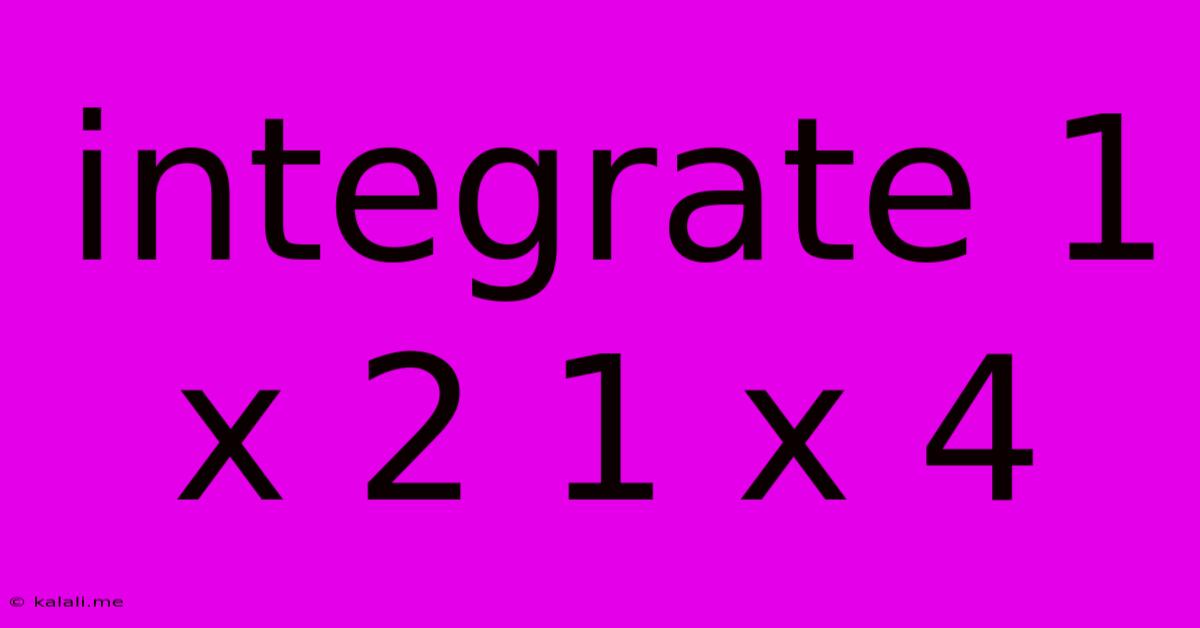Integrate 1 X 2 1 X 4
Kalali
Jun 03, 2025 · 3 min read

Table of Contents
Integrating 1x2 and 1x4 Matrices: A Comprehensive Guide
This article provides a comprehensive guide on integrating, or more accurately, performing matrix operations on 1x2 and 1x4 matrices. Understanding matrix operations is crucial in various fields like linear algebra, computer graphics, and machine learning. We will explore the possibilities and limitations of these operations, clarifying common misconceptions. This guide will equip you with the knowledge to confidently handle such matrix calculations.
What are 1x2 and 1x4 Matrices?
Before delving into operations, let's define our matrices. A 1x2 matrix is a row matrix with one row and two columns. It looks like this: [a b]. Similarly, a 1x4 matrix is a row matrix with one row and four columns: [c d e f]. The elements (a, b, c, d, e, f) can be any real numbers.
Possible Matrix Operations:
The key is understanding which matrix operations are possible and which are not. We can't directly "integrate" these matrices in the way one might integrate functions. However, we can perform several other mathematical operations:
1. Addition and Subtraction (with caveats):
You cannot directly add or subtract a 1x2 and a 1x4 matrix. Matrix addition and subtraction require matrices of the same dimensions. In other words, you can only add or subtract matrices with the same number of rows and the same number of columns.
2. Scalar Multiplication:
Both matrices can be multiplied by a scalar (a single number). This involves multiplying each element of the matrix by the scalar. For example, if we multiply [a b] by 2, we get [2a 2b]. The same principle applies to the 1x4 matrix.
3. Matrix-Vector Multiplication (Dot Product):
If you have a 1x2 matrix and a 2x1 matrix (a column vector), you can perform matrix multiplication resulting in a 1x1 matrix (a scalar value). This is often called the dot product. Similarly, a 1x4 matrix can be multiplied by a 4x1 column vector. This operation is fundamental in many linear algebra applications. For instance:
[a b] * [[x], [y]] = ax + by
4. Concatenation:
You can concatenate these matrices, essentially combining them into a larger matrix. If you place the 1x2 matrix next to the 1x4 matrix, you will obtain a 1x6 matrix.
Practical Applications and Examples:
These operations have numerous applications. For instance:
- Data Representation: 1x2 matrices could represent coordinates (x, y) and 1x4 matrices could represent color information (RGBA – Red, Green, Blue, Alpha).
- Machine Learning: Row vectors are frequently used in machine learning algorithms for representing feature vectors or data points. The dot product is essential for calculating similarity or distances between data points.
- Computer Graphics: Matrices are fundamental in computer graphics for transformations, such as rotations and translations.
Conclusion:
While you cannot directly "integrate" 1x2 and 1x4 matrices in a calculus sense, several significant mathematical operations are possible. Understanding scalar multiplication, matrix-vector multiplication (the dot product), and concatenation is crucial for working effectively with these matrices in various computational fields. Remembering the constraints on addition and subtraction is equally important to avoid errors. This knowledge provides a solid foundation for tackling more complex matrix operations in the future.
Latest Posts
Latest Posts
-
How To Wire A Low High Speed 3 Phase Switch
Jun 05, 2025
-
Turn My Laptop Into Keyboard For My Android Phone
Jun 05, 2025
-
Why Is My Girlfriend Always Mad At Me
Jun 05, 2025
-
Is Spy Faster As Scout Tf2
Jun 05, 2025
-
Casting Out Demons With Prayer And Fasting
Jun 05, 2025
Related Post
Thank you for visiting our website which covers about Integrate 1 X 2 1 X 4 . We hope the information provided has been useful to you. Feel free to contact us if you have any questions or need further assistance. See you next time and don't miss to bookmark.